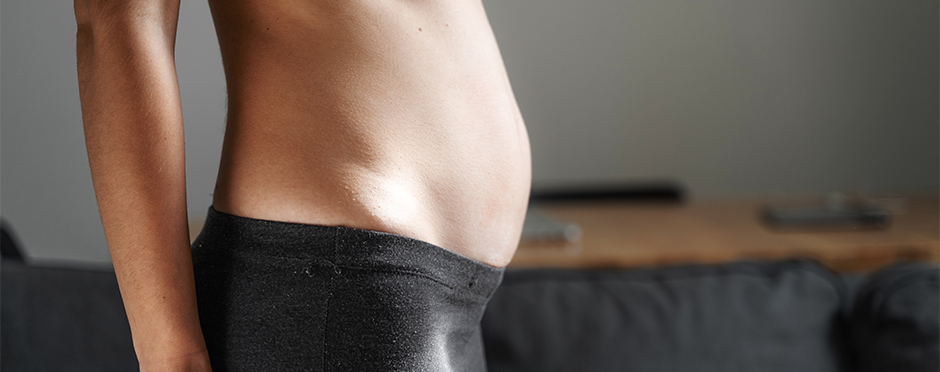
New Moms & Birth Parents: Here’s What You Need To Know About Diastasis Recti
Leave a CommentBecoming a new mom or birth parent is a joyous yet challenging occasion. One challenge that many face during pregnancy and after giving birth is diastasis recti. It is a common condition that occurs when the two sides of the rectus abdominis muscle (the six-pack muscle) separate during pregnancy. This separation can cause a bulge in the abdomen or other symptoms like low back pain, making it difficult to exercise or return to your pre-pregnancy function. Luckily, this condition can be treated successfully with physical therapy.
What Causes Diastasis Recti?
During pregnancy, the uterus puts pressure on the abdominal muscles. As the uterus expands during pregnancy, this pressure can cause the connective tissues of the rectus abdominis muscles (linea alba) to separate. Additionally, the hormone relaxin, which helps to loosen the ligaments in the pelvic area to prepare for childbirth, can also affect the abdominal muscles, making them more prone to separation. Diastasis recti occurs in the majority of pregnancies, and often spontaneously heals postpartum.
What Are The Symptoms Of Diastasis Recti?
The most noticeable symptom of diastasis recti is a bulging belly, which can persist even after the baby is born. Other symptoms may include lower back pain, pelvic pain, constipation, and difficulty engaging the core muscles. You may notice pain with walking, lifting objects around the house (or lifting the new baby), and regular activities of daily living.
How Is It Diagnosed?
Diastasis recti can be diagnosed through a physical examination by a healthcare provider, such as a physical therapist. Your healthcare provider will check for a separation of the abdominal muscles by performing a series of tests. They may also perform an ultrasound or MRI to confirm the diagnosis. At Athletico, a physical therapist will take a comprehensive subjective history and conduct an objective examination to determine a possible diagnosis.
What Treatment Options Are Available?
The good news is that research shows that diastasis recti can be treated through exercise and physical therapy. A physical therapist can help you develop an exercise plan to strengthen your core muscles and improve your function. They may also recommend specific exercises to modify as your body continues to heal.
What Can I Do To Prevent Diastasis Recti?
- Avoid holding your breath while doing any heavy lifting which can strain your abdominal muscles.
- Practice safe exercise during pregnancy and after childbirth.
- Avoid activities that create excessive bulging of your abdomen above or below your umbilical (belly button).
- Work with a physical therapist to develop an exercise plan that targets your deep core muscles, including your abdominals, pelvic floor, and back stabilizers.
Diastasis recti is a common condition that affects many new moms and birth parents. Fortunately, with proper treatment and prevention, you can manage this condition and get back to feeling your best. At Athletico, we have highly trained therapists who specialize in Pelvic Health and can support you throughout your pregnancy and diastasis recti recovery in postpartum. Don’t let pain distract you from the joy of life after giving birth. The path to recovery and pain-free parenting all starts with Athletico.
Find a Pelvic Health Therapist Near You
The Athletico blog is an educational resource written by Athletico employees. Athletico bloggers are licensed professionals who abide by the code of ethics outlined by their respective professional associations. The content published in blog posts represents the opinion of the individual author based on their expertise and experience. The content provided in this blog is for informational purposes only, does not constitute medical advice and should not be relied on for making personal health decisions.
